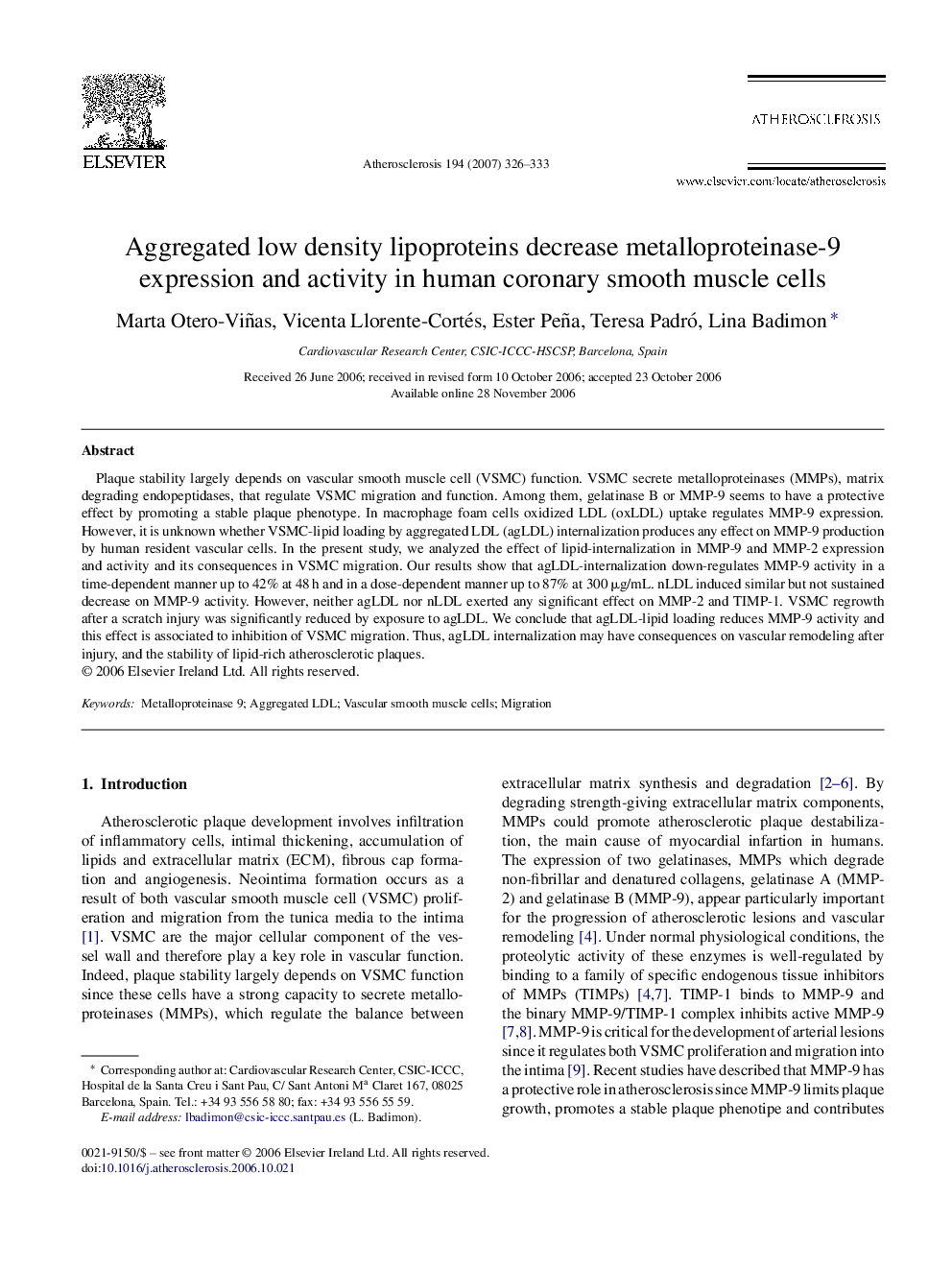| Article ID | Journal | Published Year | Pages | File Type |
|---|---|---|---|---|
| 2894427 | Atherosclerosis | 2007 | 8 Pages |
Plaque stability largely depends on vascular smooth muscle cell (VSMC) function. VSMC secrete metalloproteinases (MMPs), matrix degrading endopeptidases, that regulate VSMC migration and function. Among them, gelatinase B or MMP-9 seems to have a protective effect by promoting a stable plaque phenotype. In macrophage foam cells oxidized LDL (oxLDL) uptake regulates MMP-9 expression. However, it is unknown whether VSMC-lipid loading by aggregated LDL (agLDL) internalization produces any effect on MMP-9 production by human resident vascular cells. In the present study, we analyzed the effect of lipid-internalization in MMP-9 and MMP-2 expression and activity and its consequences in VSMC migration. Our results show that agLDL-internalization down-regulates MMP-9 activity in a time-dependent manner up to 42% at 48 h and in a dose-dependent manner up to 87% at 300 μg/mL. nLDL induced similar but not sustained decrease on MMP-9 activity. However, neither agLDL nor nLDL exerted any significant effect on MMP-2 and TIMP-1. VSMC regrowth after a scratch injury was significantly reduced by exposure to agLDL. We conclude that agLDL-lipid loading reduces MMP-9 activity and this effect is associated to inhibition of VSMC migration. Thus, agLDL internalization may have consequences on vascular remodeling after injury, and the stability of lipid-rich atherosclerotic plaques.
